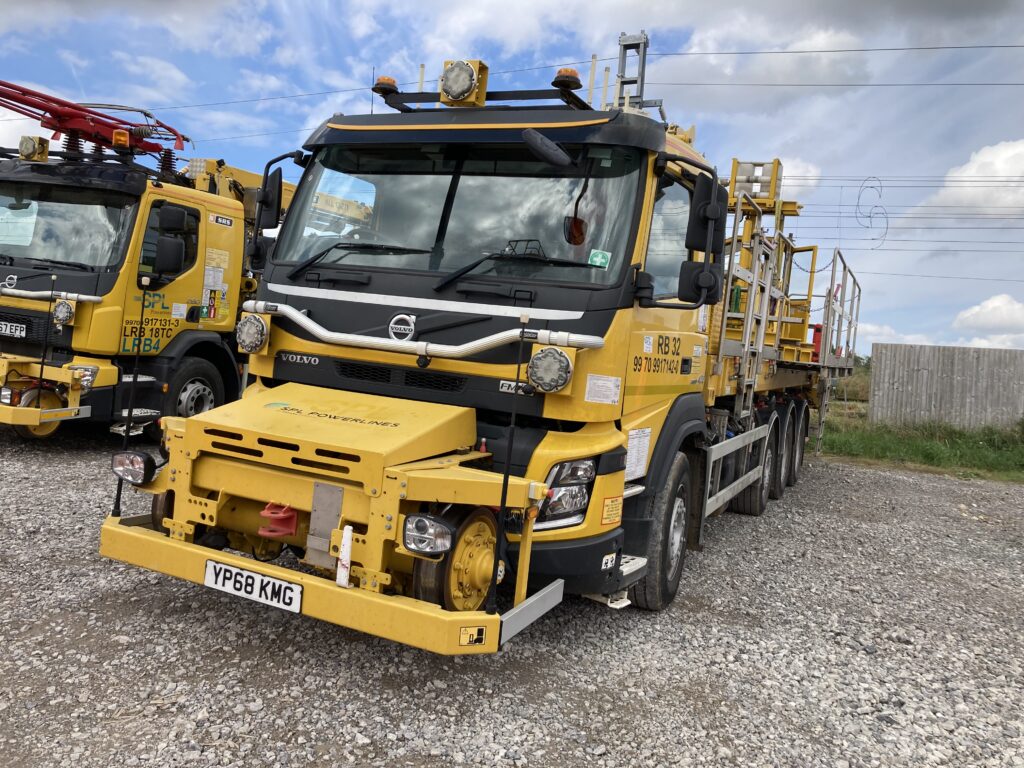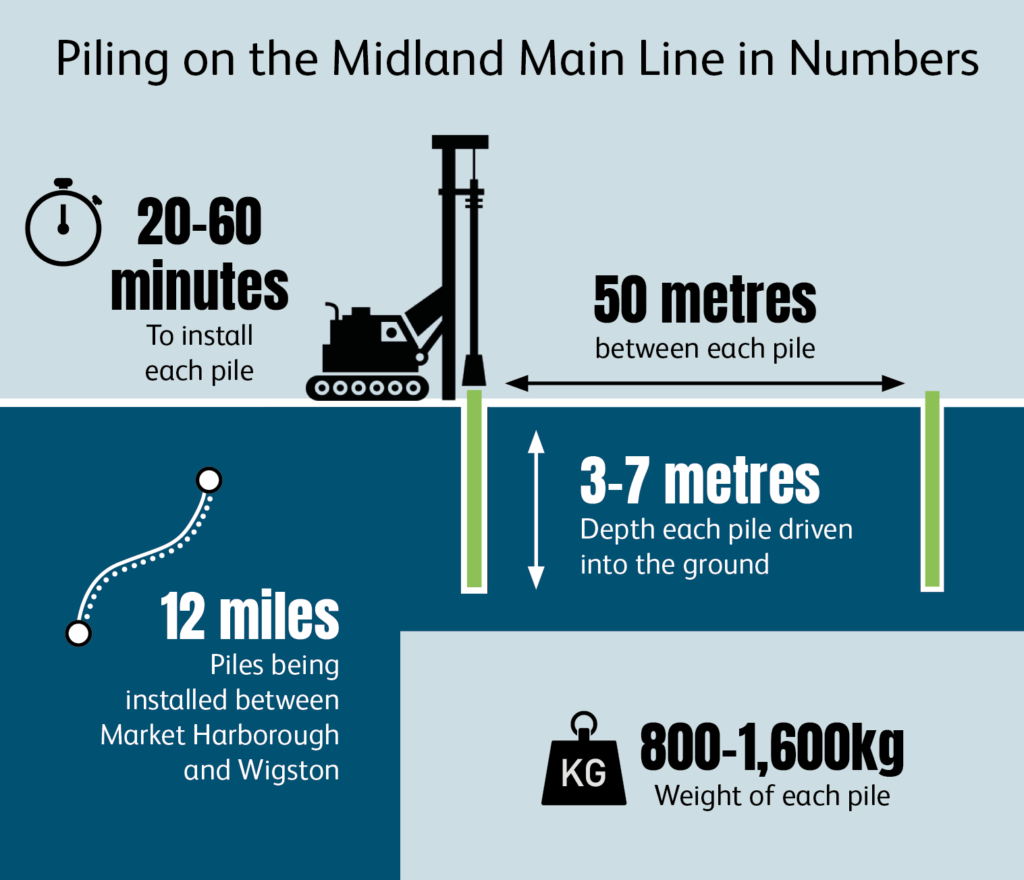The Midland Main Line is a significant railway route in England, running from London to Sheffield in Yorkshire via the East Midlands. It comprises the lines from London’s St Pancras International station via Leicester, Derby/Nottingham, and Chesterfield. Express passenger services on the line are operated by East Midlands Railway. The line hosts a London suburban commuting service pattern to Bedford with a not insignificant freight flow on the route, focusing on a major aggregate operation at Mountsorrel.
Rail Engineer covered an Institution of Mechanical Engineers’ conference in June 2013. That event looked at the emerging national plan for railway electrification and, in particular, the proposals for electrification of the Midland Main Line onward to Sheffield. The well-developed outline proposals were presented by the then Network Rail route delivery director; supported by a robust technical strategy.
Unfortunately, the onward development was ‘paused’ by the Department of Transport resulting in a serious loss of momentum as contractors demobilised. More promisingly, on 18 November 2021, the Integrated Rail Plan (IRP) was published stating that electrification of the whole line would take place. Rail Engineer previously revisited the subject in April 2021 with an optimistic view of the delivery of new rolling stock and an anticipation of electrification through the entire route to Sheffield and Nottingham.
Stops and starts
The position in 2021 had stopped at electrification of the main line onward from Bedford to Kettering and the branch to Corby. However, currently, despite the ‘pauses’, we find the electrification work, led by SPL Powerlines, has progressed towards Market Harborough with much equipment installed and the route infrastructure adapted to suit. The choice of this route section addition lies in the fact that the bulk supply point was commissioned at Braybrooke as part of the full route-long electrification scheme.
It is noted that Braybrooke feeder station is needed to support the now commissioned London to Corby (L2C) scheme in 2021. The current feeder station at Long Meadow Farm, which replaced Sundon Feeder Station, feeds the existing Mk3b OLE equipment all the way to Corby via Kettering. The current traction system for L2C is not sufficient for more than two electric trains per hour. The Kettering and South Wigston (K2W) scheme ensures that the power, notably the voltage loss at Corby, is rebalanced with Braybrooke feeder station being brought online, and allows the new Class 810 from East Midlands Railway to maximise the use of clean overhead line equipment to power their trains.
The construction process now advancing with works to continue the electrification equipment installation northwards as far as South Wigston, near Leicester. In addition to the new construction, attention has been focused on the performance of existing Mk3b overhead contact system equipment South of Bedford. This was installed for the Bedford / St. Pancras scheme in the 1980s and was not designed for the high-speed running required for the developing, main route, Inter City style of service, frequency, and speed.
SPL is to support the proposed six electric trains per hour and line speed increases to 125mph (or greater than the maximum 90mph an electric multiple unit currently runs on the old Mk3b equipment). That scope forms enhanced renewal, and SPL is proposing to develop a new overhead line system to support more trains and enhanced line speed. To offer greater resilience, this will be done by increasing contact wire tension and changing to 120mm contact wire from the worn 107mm conductor and changing the catenary from the existing Mk3b AWAC to the new preferred Bz11.

Work under way
While the route electrification appears to proceed piecemeal there is much active and positive work under way, and Rail Engineer was pleased to be invited to SPL Powerlines’ administrative and technical base at Leicester, in order to hear about current progress and the positive developments within the current works.
The Midland Main Line activities are delivered through the Leicester base, one of the major construction depots at Cookes Cattle Arch. The current K2W scheme is a route of 37 route kilometres comprising of 76 STK, with three new substations and two new neutral sections being installed. Attention has been paid within the design to operational flexibility with the use of powered trackside switches where their cost can be justified.
SPL Powerlines UK Limited is a leading independent overhead line equipment provider with both a Principal Contractor’s Licence and a Plant Operators Licence. The business provides turnkey overhead lines capabilities from design, through installation and commissioning, to final testing. The company operates both within the main line heavy rail and the mass transit sector. The company is headquartered at Coatbridge in Scotland.
As principal contractor, SPL is appointed as the lead design organisation for the current route electrification works and is also providing the construction input. This includes route clearance works north of Kettering. SPL effectively forms the ‘Hub’ for the project. SPL is also undertaking all project assurance including integration, CSM, and dispositioned traditional client-based roles like project engineers (under the Agile Client Eastern proposals).
Site visit and meeting
Rail Engineer was pleased to be invited to the SPL Midland Main Line project offices at Cannock Street near Leicester and was able to listen to a presentation on the works currently under way between Market Harborough and Kettering, including the bulk supply point at Braybrooke. The presentation clarified the scope of the project and revealed that works were now authorised as far north as South Wigston near Leicester. South of Bedford, the scope of the works includes route upgrades for speed improvement and flexibility of working, in addition to electrification. This is the preferred method of approaching electrification, that is, to rationalise the route first.
The Minimum Viable Project philosophy has been applied to signalling immunisation, where the signalling scope is to support the electrification. While there is always concern that the costs of electrification projects may increase if they are required to upgrade other life-expired infrastructure on the route, this project has focused on true cost in the electrification ground and so is only undertaking immunisation signalling works.
The multi-million-pound programme supports the Government’s ambitions for decarbonisation and aims to deliver a greener, more reliable railway to connect passengers right the way between London and Sheffield, via Nottingham and Derby.
The phase of major work will see electrification around a 20km section between Market Harborough and South Wigston brought up to speed to eventually connect the entire route, following recent upgrades further south.
Much of the work is undertaken overnight while there are no trains running to keep railway workers safe and to keep disruption to a minimum. However, advantage is also taken of the ability to install equipment at weekends where diversions may take place via the alternative route through Melton Mowbray.
The visit was moved on to visit the construction site at Cooks Cattle Arch, alongside the main line. The base was formed to function as a base for the route electrification work with pre-assembly sites, welfare facilities, and material stores on site. The site was also the base for a significant fleet of very impressive plant that was conveniently based near the route works.
The site was very comprehensively equipped and of particular interest was the pre installation assembly work. SPL explained that it planned to minimise the work to be undertaken directly on the railway infrastructure with pre-preparation on the construction depot site. A major function undertaken there was the attachment of the small part steel work to electrification structures, supported by other works even including the structure identification plates. This off-track work was heavily maximised for safety and productivity reasons. Such techniques, and the agile use of plant is part of SPL’s High Output production philosophy.

The site is particularly well laid out to allow safe working and movement of vehicles and plant. Also extremely noteworthy is the energy management on the site. With the aid of portable solar panel units, the operations can be claimed to be completely carbon neutral, lighting and power supplies being supported by natural energy. In case of loss of this source, a generator is available to ensure continuity of work, but the use of that plant is rarely required.
A further arrangement of note is the methodology of handling electrification equipment prior to site erection. Where possible, the use of craneage is avoided by creating ‘stillages’ of units which can be handled on site by forklift truck and can be placed aboard construction rail mounted plant in the same manner. As much as possible was stored on pre-arranged stillages minimising handling both in the depot and on site.
Of note was the rationalisation of electrification structure piles and pile caps to minimise stocks. Piling is now the preferred method of electrification structure installation; the piles being driven by dedicated piling plant. This avoids the downsides of the earlier methodologies of grabbed excavation and concrete with its less than positive impact on the environment. The project has a ‘2 type’ of foundation approach, 610mm circular hollow section steel piles (CHS610) and a 1-metre concrete Augers. Through the project’s continuous development, with over 3,500 foundations installed, SPL has ensured that 90% of the foundations are 610CHS piles. The K2W foundations have now been completed months before energisation. This is unprecedented on large scale electrification projects and a real success of design & construction collaboration.
For the construction base, much emphasis had been focused on social issues, and awareness of neighbours and stakeholders had led to minimising the generation of noise and other nuisance. Good communication had also helped to build a productive relationship during the project, supporting an excellent model for the industry.
Considerable investment in road / rail access plant is a signature for modern electrification construction; particularly impressive was the long-reach access platform and the large Zeck plant accompanying the traditional SRS machine; an investment of over a million pounds.
Traction electrical power grid intake
The site visits were completed by a transfer to the grid traction power supply intake site and the connection from the high voltage national distribution power lines was clear to be seen. Considerable work had been undertaken here by National Grid, and the accompanying intake substation at the lineside was a significant piece of infrastructure investment.
The original traction power distribution design had been put together to feed the route-wide electrification proposals and had been planned as an exceedingly early item. It should be noted that electrification traction power supplies were a strategic issue and once planned could not easily be altered: a national strategy for the future is a real requirement. This is one that the project has been modelling for a number of years, based on both the 2040 and the 2050 Traction Decarbonisation Network Strategy (TDNS) requirements, with and without HS2!
Scope issues
There is considerable debate over the cost of electrification and during the discussions SPL showed that it was very much alive to the issue. To that end, much effort was being placed into identifying scope which was not part of the electrification works. For instance, it is felt correcting existing non-compliances should not be charged to the core electrification project but separately identified. This awareness is to be congratulated.
Within electrification scope, but not to be discounted, were items such as electrical bonding, with some 2,000 bonds being required: a low visibility but not insignificant workload and to be undertaken directly on the running rail infrastructure. This includes lineside fencing to ensure that GRP fencing panels are being installed at strategic positions along the route. The electrification system is not just a mechanical one:

The works generate a significant amount of testing; again, contributing to electrification cost. National Technical Specification Notices are a major factor also. Associated with these requirements, the project team emphasised the volume of ‘paperwork’ to be generated to enable entry into service but described some very robust systems to enable effective control and minimise bureaucracy. The maximum opportunity had been taken to utilise digitisation and minimise the hard copy paperwork.
Finally, the team were pleased to say they had a productive relationship with the route maintenance organisation and had enabled successful direct access to the project group.
External communication
In conjunction with SPL’s work on stakeholder and neighbour relations, for its part Network Rail is piloting a new way to keep people who live next to the railway in parts of Northamptonshire and Leicestershire better informed about upcoming work that might affect them.
The programme team are sending paperwork notification calendars to lineside neighbours and stakeholders. These give details of upcoming work in the Kettering and Wigston areas. The calendars will be accompanied by a letter, which gives details on how to sign up to receive future calendars digitally, and how to access a new interactive map.
Gavin Crook, principal programme sponsor has pointed out: “Our new digital notification system will help us provide residents with accessible, clearer, accurate information in a timely way.
“Although people can still choose to receive their notifications by post, we’re hopeful that most will sign up to the digital mailing list.”
Other partners

SPL emphasised that, while it was leading the project, other partners should be acknowledged. For instance, AtkinsRéalis had been developing the Approval in Principle ES 4 dealing with design, and Van Elle was a key sub-contractor partnership to support the electrification structure piling. For the section between Market Harborough and South Wigston, the route clearance works would be undertaken by Story & AMCO.
Not withstanding the significant infrastructure works under way, there is also a new fleet of trains on the horizon: the Class 810 from Hitachi. The rolling stock design and commissioning will be closely allied to the infrastructure works and Rail Engineer will be observing and reporting on the stock as testing, commissioning, and delivery progresses.
The project gives a real feeling of progress in the application of the vitally needed electrification of our railway system; a positive demonstration that the industry can deliver and succeed! One can anticipate we will eventually see the new trains running under wires for the whole of this vital route!! Many thanks are due to SPL Powerlines and its people, especially Annette White and Simon Skinner. Rail Engineer hopes to follow the project through with a final completed view of wires all the way to Sheffield and Nottingham. Thanks also go to Network Rail for permission to work with its contractor on the preparation of this article.
PDF Version of the article here: https://issuu.com/railmedia/docs/re_novdec_2023/18


